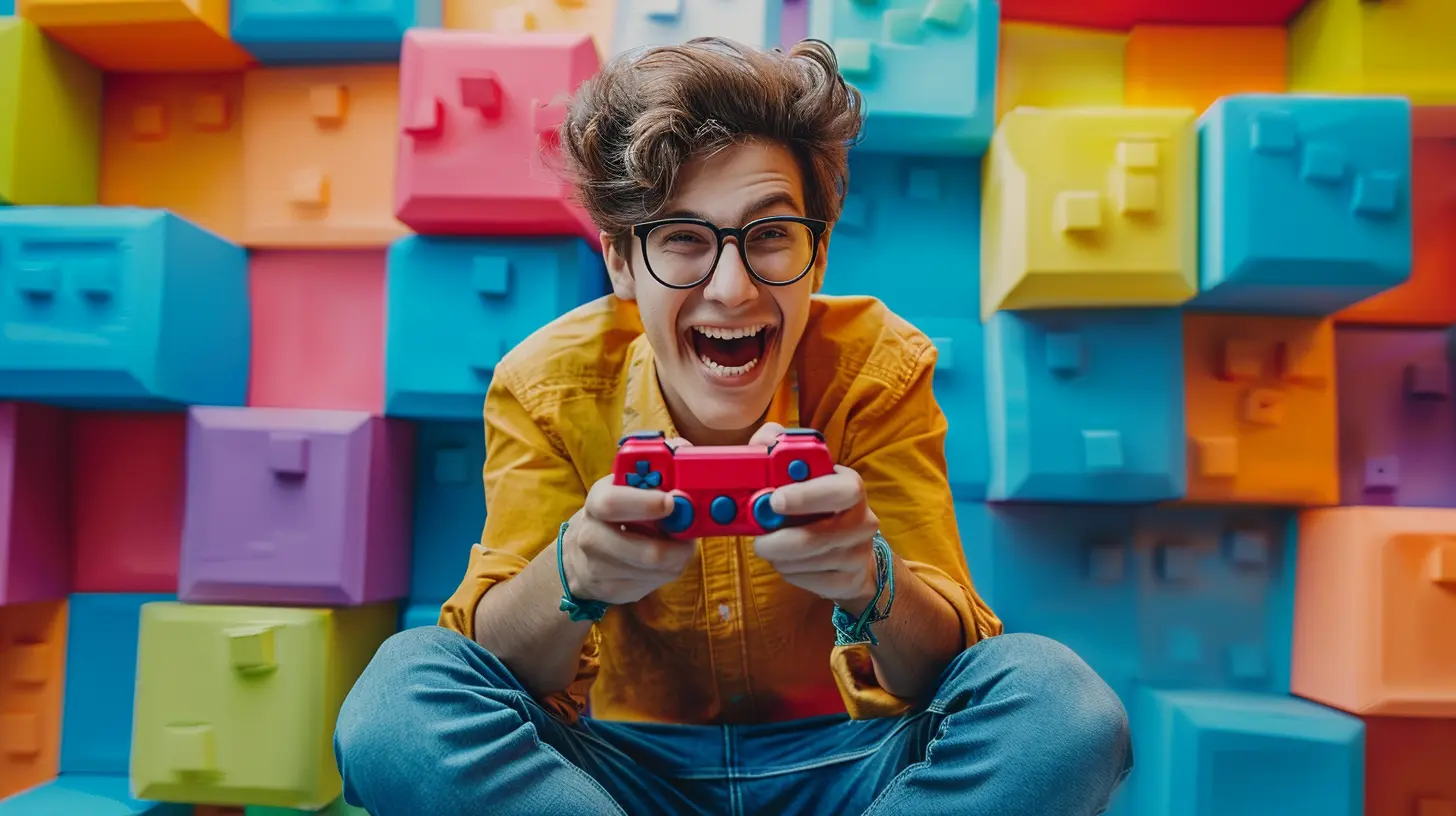Gamification in Innovation: How to Engage Employees with Fun and Creativity
31 July 2025
Let’s get real for a second—work can be monotonous. Even in the most dynamic companies, there are days when creativity feels like it took the day off. So, how do we inject a little spark back into the daily grind? Well, imagine turning work into a game—literally. That’s where gamification in innovation comes in, and trust me, it’s not just another corporate buzzword.
This strategy blends the power of game mechanics with everyday business operations, and when used smartly, it can seriously boost innovation and employee engagement. So, if you're curious how to make the workplace feel less like a chore and more like an exciting challenge, you’re in the right place.

What is Gamification, Really?
Before we dive deep, let’s clear something up. Gamification isn’t about making your people play board games all day or adding a Ping-Pong tournament to your innovation strategy. It's about applying elements typically found in games—like points, levels, challenges, and rewards—into non-game environments such as the workplace.Picture this: You give employees small missions, recognize their progress with badges or points, and maybe even throw in a leaderboard to spice things up. Suddenly, what used to be another routine brainstorming session turns into a fun, collaborative quest for the next big idea.
You’re not just lightening the mood; you're awakening their inner competitor, creator, and collaborator. That’s gamification in action.

Why Innovation Needs a Boost
Innovation isn’t just about flashy tech or groundbreaking products. It’s about constantly improving, thinking differently, and staying ahead of the curve. But here’s the kicker: keeping employees engaged in innovation efforts is hard. Why?Because innovation is risky. It’s uncomfortable. Sometimes, it feels like you’re throwing darts at a wall blindfolded. People are naturally afraid to fail, and without the right environment, most won’t even try.
That’s where gamification becomes your silent superhero. By introducing game-like dynamics, you make it OK to take risks, fail fast, and try again—without the fear of judgment.

How Gamification Sparks Innovation
Let’s break down some ways gamification turns your workplace into an innovation playground.1. It Taps Into Intrinsic Motivation
Games are addictive (in a good way). Why? Because they speak to our deepest motivations—achievement, competition, curiosity, and purpose. When you wrap your innovation process in a gamified experience, you’re not forcing creativity. You’re inspiring it.Instead of saying, “Hey, we need new ideas for next quarter,” you say, “Join our Innovation Quest and earn rewards for submitting ideas to improve our services.” Same goal, wildly different response.
2. It Builds a Culture of Continuous Learning
In any good game, the more you play, the better you get. Levels and feedback loops keep players invested. Now apply that to your innovation strategy. Create levels of idea generation where participating employees move up as they contribute more refined or impactful ideas.Maybe junior employees start at the “Explorer” level and, after a few successful pitches, become “Innovators.” You’re not just rewarding participation—you’re building skills steadily, and more importantly, visibly.
3. It Encourages Collaboration
Ever played a game that required teamwork to win? That same magic can happen in your office. Add team challenges, collaborative projects, and shared rewards, and watch silos break down.People naturally start bouncing ideas off each other—not because they’re told to, but because they want to. Creating smart, multi-department task forces or innovation squads with gamified missions helps diverse teams shine.
4. It Makes Feedback Fun (Seriously!)
Let’s be honest: Feedback can be awkward. But in games, feedback is instant and expected. You know right away if you’re hot or cold. Add that same fast-paced feedback into the innovation process with digital tools, peer reviews, or mentor shout-outs.By gamifying the way feedback is delivered—through scores, badges, or quick assessments—you take away the sting and make it actionable. Employees don’t dread feedback anymore; they look forward to leveling up.

Real-Life Examples of Gamification in Action
Still not convinced? Let’s look at how some companies walked the talk.Google’s “20% Time”
Okay, it’s not gamification in the traditional sense, but it’s gamified in spirit. Google gave employees 20% of their time to work on passion projects. The act of choosing what to work on created personal “quests,” and the reward? Products like Gmail and AdSense. That's a win.SAP’s “Roadwarrior” Sales Game
SAP turned a boring training program for salespeople into a mobile game. Sales reps gained points by completing activities, answering questions, and enhancing their knowledge through gameplay. Not only did productivity climb, but engagement skyrocketed too.Deloitte’s Leadership Academy
Deloitte added gamification to its executive training program. They added badges, leaderboards, and missions. The result? Users stayed longer in the program and actually completed more courses. It made learning addictive—for all the right reasons.Tips for Successfully Adding Gamification to Your Innovation Strategy
Thinking of giving this a shot? Great! But don’t just roll out a leaderboard and call it a day. Here are some insider tips to do this right.1. Know Your People
Not everyone loves the same kind of game. Some folks are naturally competitive, others prefer collaborative play. Get to know your team’s preferences before you gamify anything. One approach won’t fit all.Run surveys, talk to folks in small groups, or test a few different styles before committing to a full rollout.
2. Keep It Simple and Fun
Nobody wants to play a game that feels like a second job. The mechanics should be easy to understand, and the rules should be crystal clear. Make the experience smooth, intuitive, and—above all—fun.Use humor, design cool visuals, and make sure your platform (digital or otherwise) feels like a game, not a spreadsheet.
3. Recognize and Reward
The reward doesn’t always have to be monetary. Public recognition, extra time off, exclusive perks, or even symbolic trophies can go a long way.The key is to make the rewards meaningful and tied directly to the behavior you want to encourage: creativity, participation, collaboration, risk-taking, and follow-through.
4. Keep Iterating
Like any game developer, think like a beta tester. Launch small, gather feedback, and improve. Maybe your initial gamified system works well for the marketing team but not for R&D. That’s OK.The beauty of gamification is its flexibility. Refine the process based on what works—and don’t be afraid to change the rules as you go.
Common Pitfalls (And How to Avoid Them)
Gamification can be amazing, but it can also flop if misused. Here’s what to watch out for:- Overcomplicating the System: If it takes five meetings to explain how to earn a badge, you’ve lost the point. Keep it intuitive.
- Ignoring Motivation: Don’t assume people only care about points. Tap into their passions, not just their competitive streaks.
- Failing to Align with Business Goals: Yes, fun is great. But tie your game mechanics back to your actual innovation objectives or it becomes a distraction.
- One-Size-Fits-All: Personalized experiences win. Tailor your strategy to fit different roles, teams, and personalities.
Tools and Platforms to Help You Get Started
Not a game designer? No problem. There are plenty of platforms out there designed to help you gamify without needing to code or hire a studio.Here are a few to explore:
- Bunchball Nitro – Great for enterprise gamification with analytics.
- Centrical – Combines microlearning and game mechanics for employee engagement.
- Kahoot! – Perfect for trivia-style brainstorming and team-building.
- Mambo.IO – A flexible gamification platform for developers and managers alike.
Just a heads-up—while these tools are helpful, the real secret sauce is HOW you use them, not just the tech itself.
Bringing It All Together
Let’s face it: We all have a little gamer inside us. Whether it's collecting badges, leveling up, or simply enjoying a challenge, gamification speaks to something human—and when you bring that into the workplace, magic can happen.Innovation thrives in a culture where people feel safe, energized, and, yes, even entertained. Games have the power to cut through the noise, reduce resistance, and spark something special in your team.
So, if you’re trying to stir creativity, drive collaboration, and make innovation fun again, gamification might just be your secret weapon. Who says work and play have to live in separate worlds?
all images in this post were generated using AI tools
Category:
Innovation StrategyAuthor:

Ian Stone
Discussion
rate this article
1 comments
Lindsey Whitaker
Turning work into a playground, yay!
August 22, 2025 at 4:16 AM

Ian Stone
Absolutely! Embracing play in the workplace sparks creativity and boosts engagement. Let's make work enjoyable!


